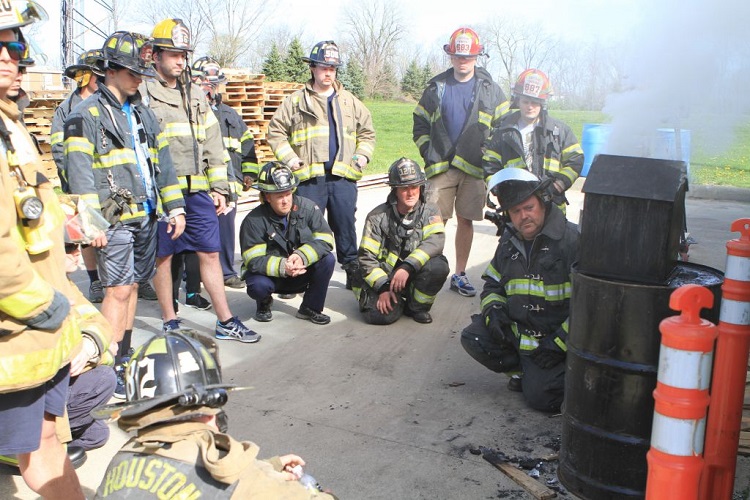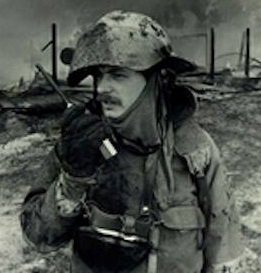
Photo by Tim Olk.
By Vincent Wolfe
How do we, as firefighters and fire officers, determine what tactics and considerations to use or rely on when faced with a structural fire event? In years past, the offensive and defensive choices sometimes became blurred. As we move forward, our offensive tactics are being challenged, challenged by our enemy (the fire) and allies alike.
Our enemy is a living, breathing entity that has evolved over the years from ordinary combustible fuels to a fuel base composed of synthetic, man-made materials. Many of these fuels deliver heat and fire characteristics consistent with flammable liquids. Are you taking this into consideration in your decision-making process?
The playing fields of our battles have evolved as well. Added insulation, vapor barriers, insulated windows, and large open spaces allow the heat and products of combustion to be held within the structure. How have your tactical considerations evolved to address these changes?
Our history shows that we have experienced 200 years of direct attacks. After this, many of us went into a multidecade fascination with indirect fire attack. These tactics were eventually questioned and then rejected in favor of direct interior attacks. At the time of this reversal, the fuels and the playing fields still provided challenges to us in these attacks.
The primary fabric for structural firefighting gear was cotton duck. The use of self-contained breathing apparatus (SCBA) was just being widely accepted by firefighting personnel. Hazards to the firefighter were compounded by the absence of understanding applicable ventilation tactics, which led to an increase in line-of-duty deaths.
Today, National Fire Protection Association-certified fire resistant gear is the norm. Positive pressure SCBA is also the norm. Hoods, gloves, and boots have all improved and provide greater levels of protection to our personnel. High heat levels threaten the thermal protection of our clothing and equipment. Lightweight construction features make it risky to put personnel above heavy fire conditions.
Lightweight construction hazards have been known for decades, first appearing in commercial structures; they are now commonplace in virtually all aspects of residential construction. Do you monitor new construction in your response area? What is supporting the floors which you will move across? What is supporting the roofs under which you will operate?
So, what about our allies? Young, fit, aggressive firefighters who want nothing more than to engage our enemy in battle. During the past several decades, the actions of these personnel, along with their leaders, have led to the damage to and the destruction of personal protective equipment and the injury to personnel. This has led to a severe reduction in the quality and realism in our live fire training exercises. Do these “trained and certified” personnel have an unrealistic view of their capabilities and the hazards that they could potentially face?
The National Institute of Standards and Technology (NIST), Kill the Flashover (KTF), Flow Path Management are a few of the agencies and movements that are examining our battlegrounds and providing recommended tactical considerations for our use. Are you following the data being released by these and other entities? Are you considering or implementing the tactical considerations being presented by these entities?
RELATED
Adams on Attack Lines on the Rear of the Rig vs. Crosslays/Speedlays
Pepler: For Officers, Failure Is Not an Option
Clark and Scaglione: Deploying the Leader Line or Courtyard Lay
“Wet Stuff on the Red Stuff”
The weapon of choice for our battle is water. Hose is our delivery system. Hose size, nozzle type, design, and selection are the variables. Available personnel determine the size and number of lines that can or will be deployed. When fuels were primarily ordinary combustibles, it was easier to deliver flows that could overpower the heat being generated by the fire. As the fuel component has morphed, the heat generation has increased dramatically; it is now at a point that it challenges our ability to “safely” deliver water in a quantity to absorb the heat quickly or to operate “safely” in the environment created by the incident. What adjustments must we make in our tactics to provide a reasonably safe environment for our operating forces?
Today’s firefighters’ choice of attack lines are determined long before the incident occurs. The numbers, size, and lengths of the preconnected lines are cemented within the design of the apparatus. Nozzle styles and settings tend to reflect the preferences of department administrators rather than the needs of the specific event. We pull the line, apply the water, the fire goes out, and we reload the line for its next deployment. What happens when the pre-connected lines don’t match the fire?
I came to the fire service during a much simpler time. Hose choices were 1½- and 2½-inch. The 2½-inch doubled as an attack and supply line. Nozzles and appliances (appliances for some of the nozzles) were stored in a compartment or elsewhere on the apparatus. Reality check: There were two preconnected lines that were rubber and on reels. These were convenient and used in a few instances where hindsight might have had us choose otherwise. In any case, the choice of attack line size, length, and nozzle were all specific to the event.
Today, what happens when the preconnected line isn’t adequate to deal with our event? Specifically, when the length of the line is inadequate? We seem to have lost the ability to compensate for hose length or to adapt quickly to these issues. Examples could be adding a 1¾-inch line to the play pipe of a deployed 2½-inch line or adding a gated wye so that two lines could be deployed. If the need arose, how easily could our preconnected lines be disconnected and redeployed on the fireground? Would we lose capabilities as a result, and how would our driver operator respond?
A remnant of ancient times in the fire service is the “reverse” lay. If you responded to an event today and ordered your crew to perform a reverse lay, how profound would the blank look on their collective faces be? It would be just as blank as the look I got when—in a “rural” setting and preparing to go off the paved street and into a yard—I ordered the driver to stop the apparatus, I swung its door open, and told the firefighter on the back step to “lay a line.” I looked back at the driver and said, “This is going to take a minute.” After showing the firefighters what I wanted, we proceeded to our desired position and began our operation.
Author’s note: In the above scenario, we were in a suburban setting without an established water supply. We had previously discussed laying supply lines if we left a major road or any paved surface to keep our water supply apparatus mobile. That information had not filtered down to firefighting personnel at that point. Additionally, referencing “reverse” lays: Many reverse lays are performed in today’s fire service by a second engine providing water supply for the ”first-in ”engine, which functions as a manifold at the fire scene. The “reverse” lay discussed earlier would be performed by a first-arriving company.
 Vincent Wolfe is the lead instructor at Vulcan Training Specialists. He has been active as a career and volunteer member since 1972, serving in ranks from firefighter through chief for organizations in Pennsylvania and North Carolina as well as in Iraq supporting Operation Iraqi Freedom. VWolfe@Vulcants.com.
Vincent Wolfe is the lead instructor at Vulcan Training Specialists. He has been active as a career and volunteer member since 1972, serving in ranks from firefighter through chief for organizations in Pennsylvania and North Carolina as well as in Iraq supporting Operation Iraqi Freedom. VWolfe@Vulcants.com.


